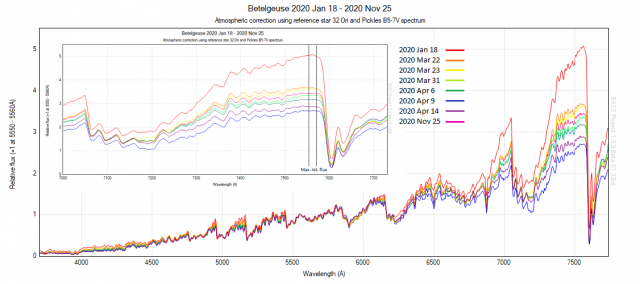› Forums › Variable Stars › VSS Circular 186 now available › Betelgeuse
Mark Kidger’s interesting article on the possibility for another deep fade of Betelgeuse coincided with my restarting spectroscopic observations (unfortunately only one break in the clouds so far here in the southwest in the last few weeks). The deep visual fade and rebrightening of Betelgeuse at the beginning of this year was accompanied by the reverse change in relative brightness in the near infrared (I think there was an earlier thread on the forum about this but I couldn’t seem to find it). This could be seen in my Alpy 600 spectra corrected for instrument response and atmospheric effects. I’ve tried to approximate this change by measuring the maximum relative flux as far into the infrared as my combination of Alpy 600 and Atik 314L camera will allow, in the region 7555 – 7565Å:

A comparative plot of the Vmag data from the AAVSO database along with this maximum relative flux in the near infrared gives the following:

I’d be interested in any feedback on this methodology. And it will be interesting to see how the two characteristics evolve over the next few months. Could the evolution in the near infrared depend on the casue of the fade (pulsation, starspot or dust?)
